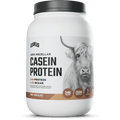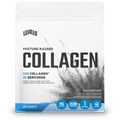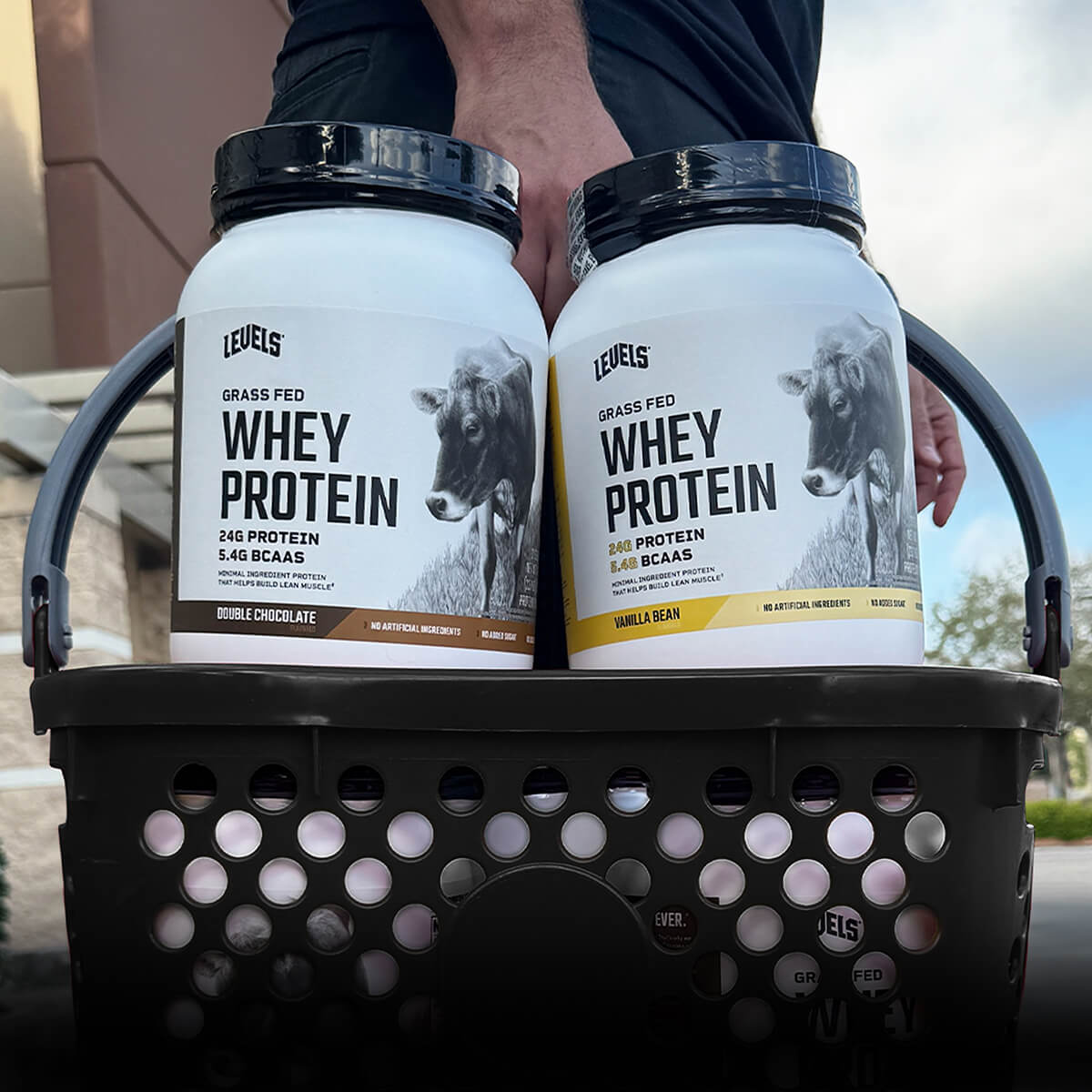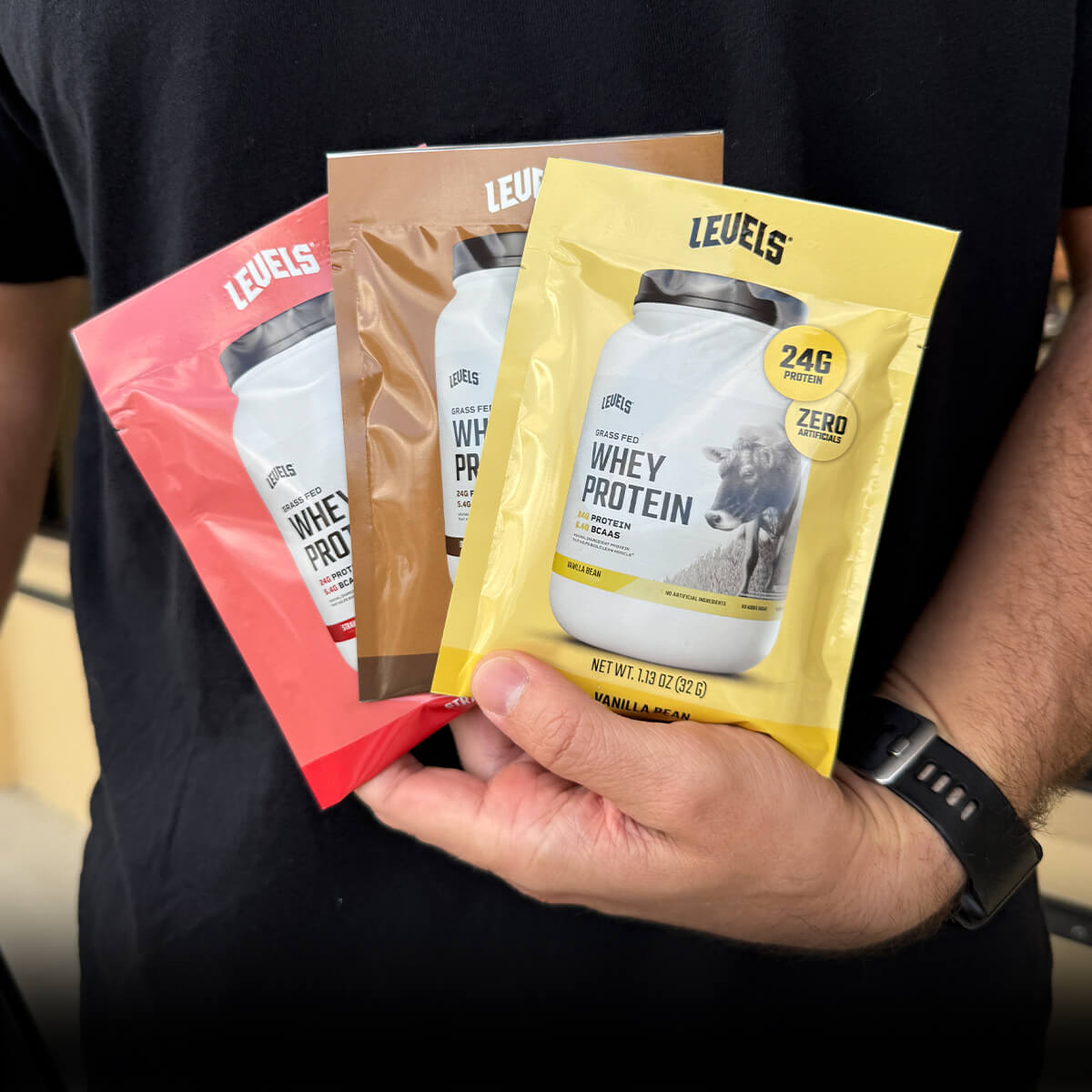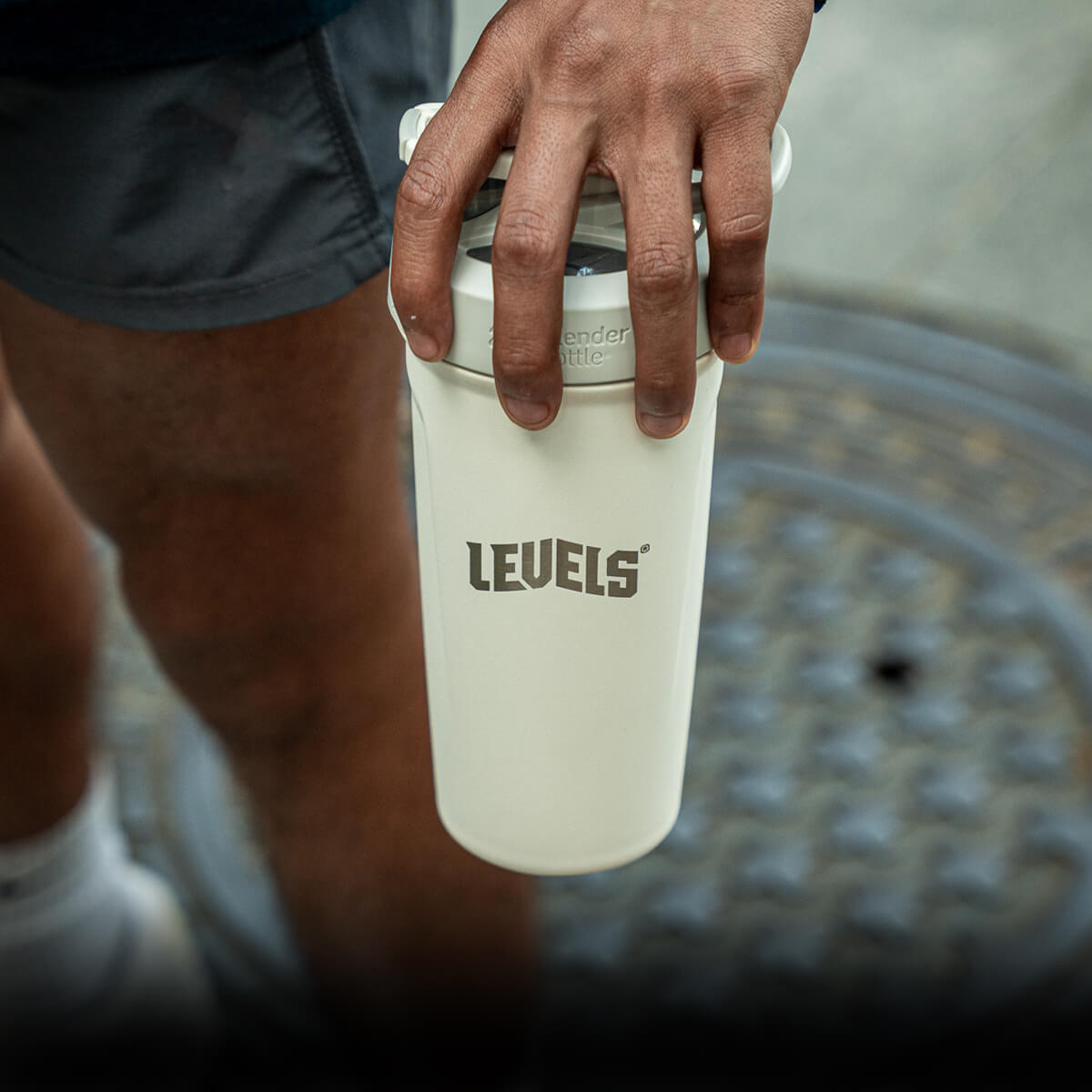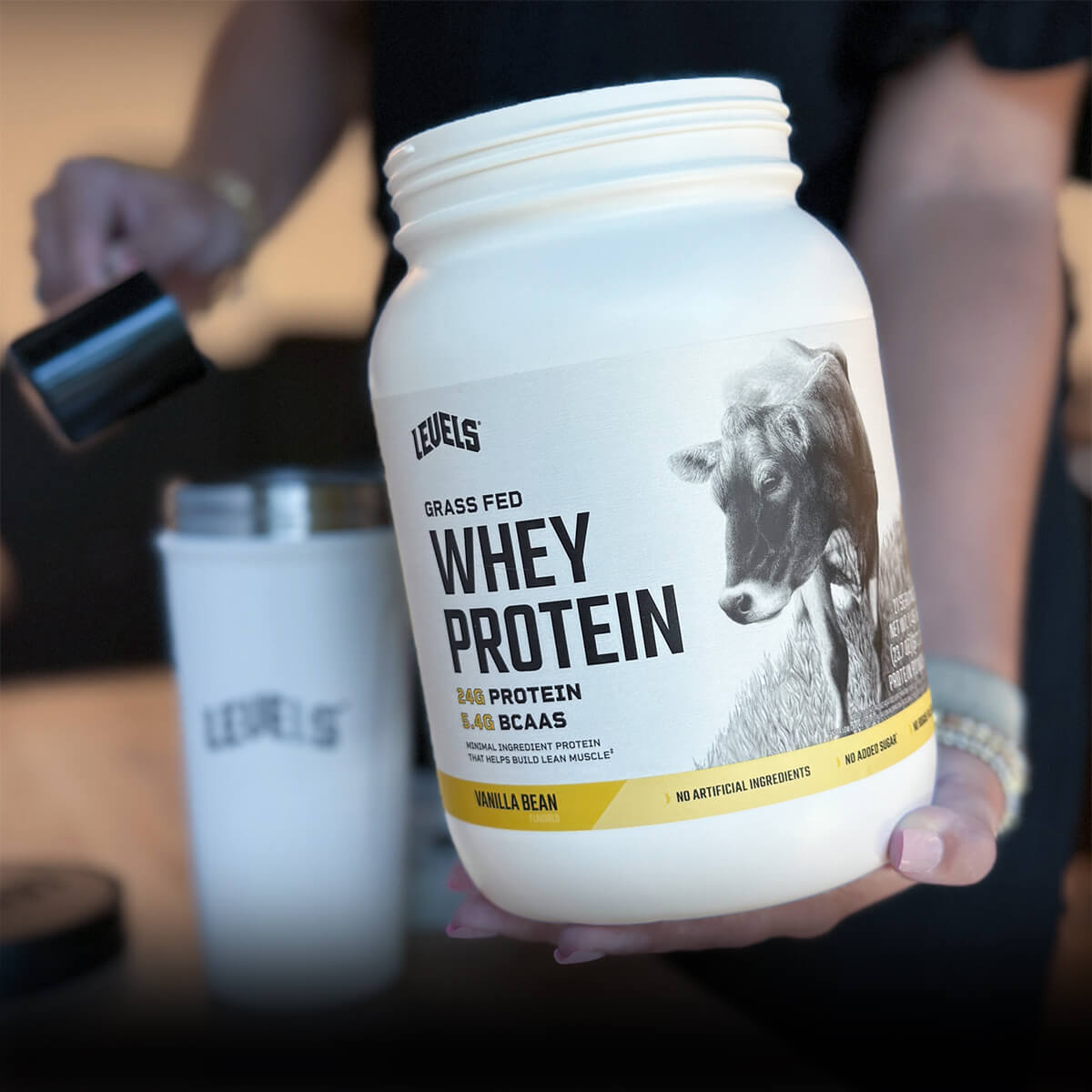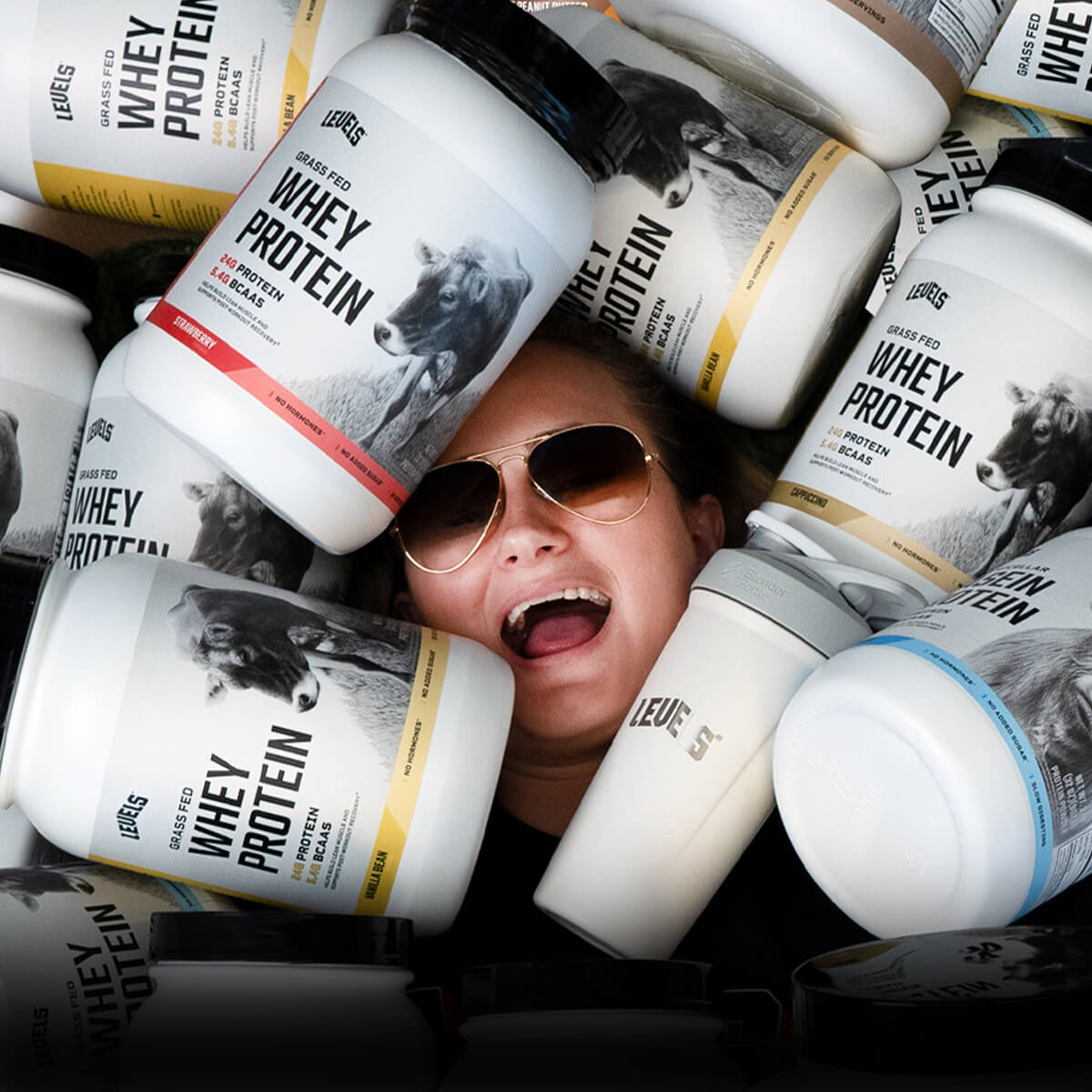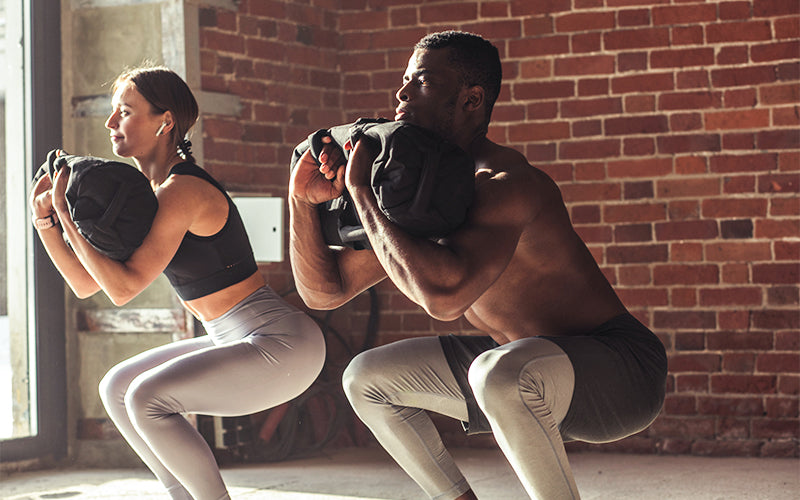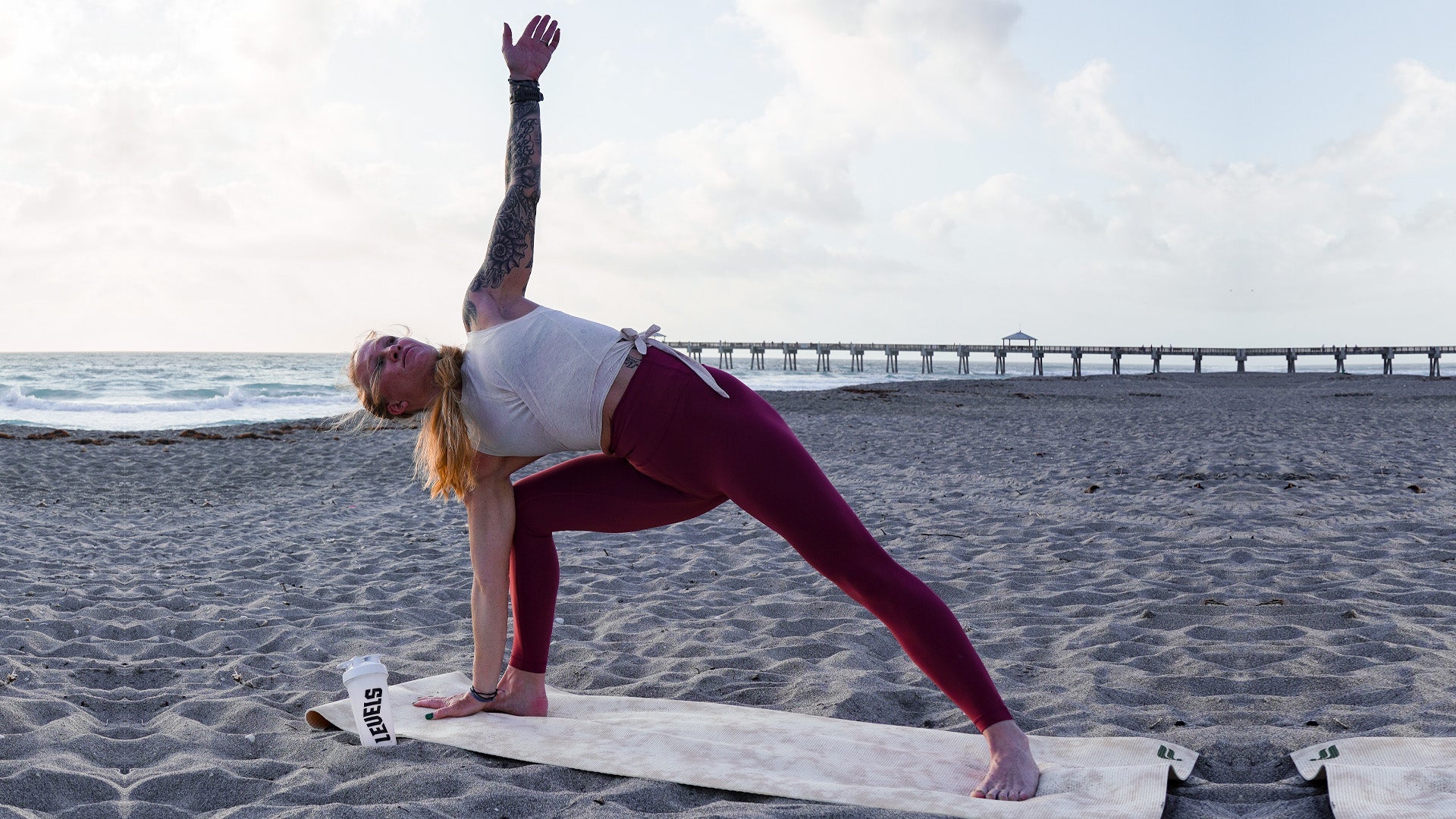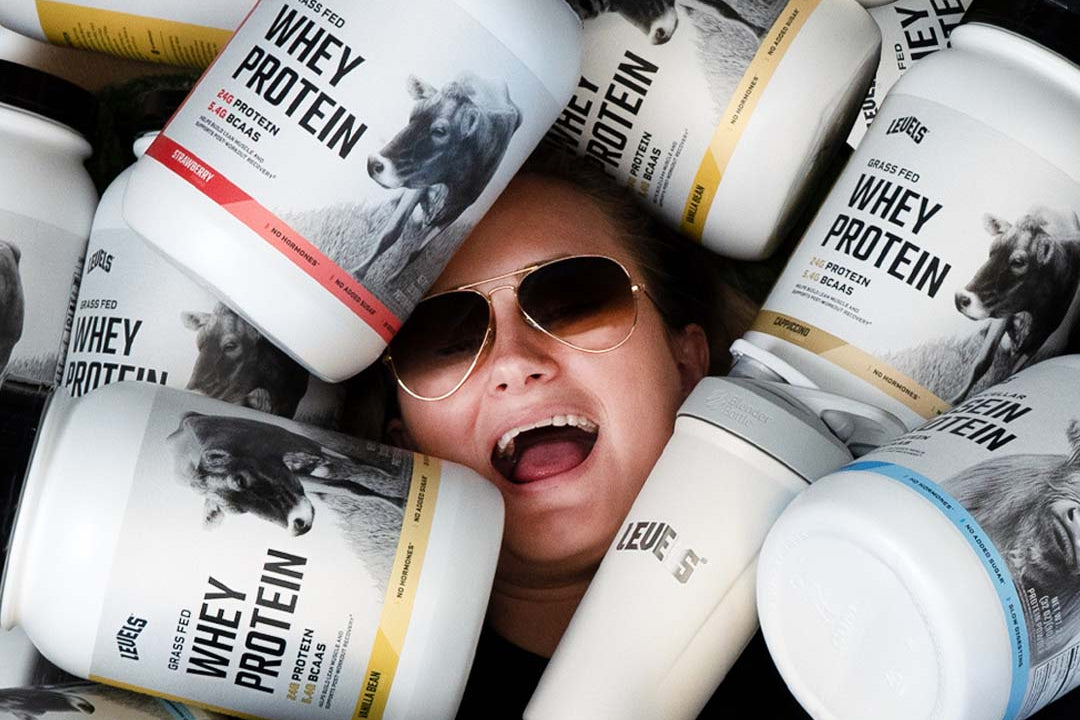Building muscular endurance can increase whole-body strength, improve your posture, and reduce your risk of injuries.
No matter what your fitness goals happen to be, focusing a portion of your training time on muscular endurance is a winning tactic.
Keep reading to learn the best exercises to maximize muscular endurance in every muscle group, where it fits into the big picture of fitness, and a sample routine to rapidly increase your stamina.
What Is Muscular Endurance?
The goal of muscular endurance training is to perform more reps or keep a muscle group active for a longer period of time.
Here’s the technical definition of muscular endurance as a fitness quality: “the ability of muscles to remain active for extended periods of time while resisting or recovering from fatigue.”
As an illustration, let’s examine the differences between the maximum pushup test (a pure muscular endurance activity) and a marathon.
If you’re attempting to do as many pushups as possible, when you reach your limit, it’s not because you had to stop and catch your breath. Instead, it’s most likely because all the muscle fibers that allow you to perform a pushup finally became exhausted.
And to get better at the maximum pushup test, you’d need to practice doing high-rep pushups. Increasing your aerobic fitness would be totally irrelevant to doing lots of pushups.
On the other hand, someone who is unable to finish a marathon can probably still walk shortly after their failed attempt. That means the limiting factor was their inadequate aerobic fitness, not a lack of endurance in the muscle fibers of their legs.
If you can’t finish a marathon, no amount of muscular endurance training will make it possible. You’d need to focus on aerobic endurance training.
A competent marathoner may become a much better runner and lower their injury risk by increasing muscular endurance, but aerobic endurance is the core fitness quality required to finish a marathon in the first place.
In other aerobic-dominant activities, though, muscular endurance may be a limiting factor.
One such hybrid example is rucking, which is walking or marching with a weighted pack or vest up to one-third of your bodyweight.
Rucking overloads your postural muscles, and people who aren’t experienced with rucking often have to stop for safety reasons when their form breaks down. The breakdown of form while rucking can occur well before you reach the limit of your aerobic fitness.
Aside from pushup tests and other fitness standards, most real-world activities involve other fitness qualities besides just muscular endurance.
The Science of Muscular Endurance Training Adaptations
Although muscular endurance training can tax all three of your body’s energy systems (ATP-CP, glycolytic-lactate, and aerobic-oxidative), it works primarily by targeting specific muscle groups and fatiguing their long-lasting muscle fibers.
Your skeletal muscles contain two primary categories of muscle fibers: Type I (known as “slow-twitch”) and Type II (also called “fast-twitch”) [*].
Larger, stronger Type II fibers are the main movers for powerful, explosive, short-burst, or max strength activities. In contrast, smaller Type I fibers generate less initial power, but can stay active for far longer.

Because muscular endurance exercises typically involve higher rep ranges compared to strength and power training, they target slow-twitch Type I muscle fibers[*].
After 2-4 weeks of muscular endurance training, many beneficial fitness-related adaptations occur in your body[*].
These adaptations include hypertrophy (growth) of Type I fibers, heightened oxidative metabolism (fat-burning ability) of Type I and Type II fibers, capillarization (formation of new blood vessels to deliver oxygen and nutrients to muscles), and greater mitochondrial density for increased energy production[*].
Muscular Endurance Rep Ranges
According to the exercise science principle called specific adaptation to imposed demand, or SAID for short, your body can only adapt to the demands you place upon it[*].
Therefore, your training routine should reflect your goals.
It may sound obvious, but you can’t significantly improve muscular endurance unless you train with enough reps to fatigue Type I muscle fibers.
Unlike training for strength or hypertrophy, which usually involves 1-12 reps per set, lifting for muscular endurance uses exclusively higher reps.
Fifteen reps per set is the minimum volume for muscular endurance, and 25+ reps is typical.
You can potentially even do hundreds of reps per set, but unless your specific goal is to do hundreds of reps, there is probably a point of diminishing returns around 100 reps.
The reason is that anything past 100 reps per set is so lightweight it will likely tap into the aerobic energy system as opposed to conditioning your Type I muscle fibers for greater endurance capabilities.
Who Should Train Muscular Endurance (And Why)?
Here are the most common reasons people focus on muscular endurance:
- Maximizing performance on fitness tests for firefighters, police, and military service members
- Preventing injury, improving full-body strength, and achieving postural benefits
- Being well-rounded and attaining the best overall fitness levels
In the first example, specializing in muscular endurance is absolutely necessary to do as many pushups, pullups, and situps as humanly possible.
Even if you don’t need to prioritize pure muscular endurance as a specific fitness quality, some exercises of this type (which we’ll cover shortly) can help prevent injury, bring up weak areas, and correct bad posture.
Although muscular endurance is secondary to pure strength and aerobic fitness in terms of foundational fitness qualities, there’s no denying that spending as little as 4-6 weeks of your training year on it will lead to rapid improvements. Those muscular endurance gains may also translate to increased fitness in other areas.
Anyone who wants to be as well-rounded as possible in terms of general fitness should occasionally prioritize muscular endurance.
The Top 10 Muscular Endurance Exercises & Activities
The proper exercise selection for muscular endurance depends on your goals and context.
As with other fitness qualities, compound lifts are more time-efficient, recruit more muscle fibers, and offer more bang for your buck[*].
But if you’re looking to correct a muscle imbalance, straighten out your posture, or reduce your risk of injury, isolation or single-joint lifts also play a role.
Always ensure you use perfect form when lifting, especially for technical lifts. Instead of going to full muscular failure, end your sets when you’re no longer steady or your form begins to decline.
1. Farmer’s Walk and Loaded Carries
The farmer’s walk is a fundamental muscular endurance movement that overloads your grip while teaching correct posture. It’s the ideal exercise from this list to incorporate into your regular routine as a warmup or finisher.
Use dumbbells, kettlebells, or a trap bar, or change it up with loaded carry variations like the suitcase carry, waiter’s walk, or rack position carry.
Coaching cues: Head tall and level, chest out, shoulders back, spine straight, walk steady.
2. Pushup-Position Plank
The pushup-position plank helps activate your transverse abdominis, reducing spinal injury risk during other movements[*].
It’s also a benchmark of core strength and an excellent starting progression leading up to full pushups.
If you can’t hold this position isometrically for 1-2 minutes, your work is cut out for you. Add it to your warmup routine or between work sets.
Coaching cues: Elbows tucked in and slightly bent, posterior pelvic tilt (abs and spine slightly flexed), squeeze the abs and glutes.
3. Kettlebell Swing
As a dynamic movement, the one- or two-handed kettlebell swing offers a unique opportunity to train speed-strength-endurance with minimal injury risk. It’s also a better choice than high-rep Olympic barbell lifts for safety reasons.
If you’d like to try a more technical lift for speed-strength-endurance, the kettlebell snatch is a runner-up.
Coaching cues: Hinge (don’t squat), explode and fire the glutes to extend the hips fully at the top (hip extension is primary, kettlebell height is secondary), actively snap the ‘bell down.

4. Pushups
Pushups are the quintessential body weight muscular endurance exercise. They’re also a part of countless physical fitness standards.
If you can’t do a full pushup yet, begin with the pushup-position plank, then add some pushups at 45 degrees or less on a chair, stair rail, or similar, or from your knees.
Coaching cues: Posterior pelvic tilt (abs and spine slightly flexed), squeeze the abs and glutes, lower under control until your nose touches the ground, explode up and lock out.
5. Pullups and Chinups
When it comes to classic bodyweight movements, pullups and chinups are the bodyweight pulling counterpart to pushups. You can use a towel or martial arts gi to enhance the grip endurance benefits of these exercises.
If you can’t do a full pullup yet, use a band, partner, or machine for assistance.
Coaching cues: Posterior pelvic tilt (abs and spine slightly flexed), start from a dead hang, explode up, collarbone to the bar, lower fully under control.

6. Bodyweight Inverted Row
Whether or not you can do a pullup, the bodyweight inverted row is a more scalable exercise that offers additional benefits as a horizontal upper body pulling movement.
Adjust the bar height and your foot and torso positioning to make it easier or harder.
7. Kettlebell Crush Curl
Kettlebell crush curls are a phenomenal exercise to recruit and fatigue fibers in your grip muscles, forearms, biceps, and more.
And because they offer a combination of open-hand crushing grip and supporting grip, they’re also a nice change of pace from the usual supporting grip on a one-inch barbell or dumbbell handle.
8. Face Pull With External Rotation
For healthy shoulders and good posture, your middle trapezius, rhomboids, and rotator cuff muscles need to be active and strong, with plenty of endurance.
Face pulls with external rotation are your one-stop solution for lowering the risk of shoulder injuries.
9. One-arm Supported Dumbbell Row
One-arm supported dumbbell rows are a bodybuilding favorite because they allow you to fatigue all the muscles of your upper and mid-back with minimal injury risk.
The same properties make them an excellent upper body muscular endurance movement, especially if you “run the rack” with multiple drop sets and no rest.
10. Romanian Deadlift
Romanian deadlifts with dumbbells or a barbell are one of the best exercises to build strong, healthy glutes.
They’re also the top pick for using high reps to build the muscular endurance of your posterior chain, especially if you don’t want the speed-strength component or technical aspects of kettlebell swings.

Bonus Technique: Sandbag Exercises
Sandbag exercises add real-world relevance to nearly any exercise by increasing the engagement of your core and grip muscles. And the ability to drop them without damaging anything makes sandbag exercises conducive to pushing the limits of your muscular endurance.
Try high-rep sandbag clean and presses, bent-over rows, and squats. You can also bear-hug and carry them for time or distance.
Best Muscular Endurance Activity: Rucking
Rucking sits squarely between cardio and muscular endurance, with plenty of the health and fitness benefits of both. Even if you don’t need to practice rucking for a PT test, this primal muscular endurance activity is a time-efficient way to boost your stamina.

Proper form consists of walking at your target pace (15-20 minutes per mile) with a straight spine, no shuffling allowed. If your form breaks down, take the pack or vest off and take a break or end your ruck session.
Most people can start off rucking for 20-30 minutes with 20-35 pounds once or twice per week. Over time, you can work up to hour-plus rucks with up to a third of your bodyweight.
Runner-Up Muscular Endurance Activity: Pushing or Pulling Prowlers, Sleds, and Vehicles
There’s nothing quite like pushing and pulling heavy objects for time. You can push a prowler or sled, or walk backwards to pull either one.
Compared to rucking, this activity offers more muscle fiber recruitment with less of an aerobic endurance component.
One to two minutes per “set” is a good starting point for muscular endurance, and you can increase the pace, loading, duration, or number of sets from there.
If you don’t have access to specialized equipment, consider the old-school method of pushing a vehicle in neutral on a flat or incline. Make sure you take adequate safety precautions and have a trustworthy training partner operating the brakes and steering wheel.
Sample Muscular Endurance Training Program
Use this routine to enhance your muscular endurance without compromising on strength or aerobic fitness.
The examples below include two “finisher” routines for inclusion immediately after your normal weekly strength training sessions and a full once-weekly training session dedicated solely to muscular endurance.
For the best real-world fitness results, you should also include some aerobic endurance and muscular endurance activity training days, such as a session of running (or a similar cardio activity) and a rucking session each week.
Muscular Endurance Finisher #1
- Chinups, 2-4 sets of max reps with 3 second static top hold each rep
- Barbell or dumbbell romanian deadlifts, 2-4 sets of 15-25 reps
- Farmer’s walks with dumbbells, kettlebells, or trap bar (4-8 sets, varying the load and distance each time)
Muscular Endurance Finisher #2
- Pushups, 3-5 sets of max reps
- Face pull with external rotation using cable stack or resistance bands, 3-5 sets of 15-50 reps
- Prowler, sled, or vehicle pushing and pulling, 2-10 “sets” of 1-2 minutes each
Full Muscular Endurance Training Session
- Pullups and pushups density block, 20-30 minutes: do as many total reps of pullups and pushups as possible within the allotted time. The number of sets and rest periods are up to you and can change with each session. Beat your total rep PR each week or increase the allotted time.
- Muscular endurance circuit (2-5 sets of 25-50 reps on each of the following movements): Kettlebell swings, bodyweight inverted row, kettlebell crush curls, pushup-position plank (1-2 minutes per “set”)
Use an explosive tempo for the concentric portion of all reps, a two-second lowering tempo for sets of fewer than 25 reps, and a one-second lowering tempo for sets of 25 reps or more (except for kettlebell swings, of course).
Rest for 1-2 minutes between sets, or shorter periods if you’re using supersets or circuits.
And make sure you achieve some form of progression each week in each session by increasing sets, reps, or duration where appropriate.
If you aren’t yet able to do a “real” pullup or pushup, use scaled versions like band-assisted pullups or pushups from your knees for your high-rep muscular endurance workouts, but also make it your goal to do the full version(s).
Once you can do at least one full bodyweight pullup (or pushup), you can “grease the groove” by performing singles or low-rep daily sets of pullups (or pushups) throughout the day, every day, for rapid progress.
Conclusion
Muscular endurance is an incredibly valuable aspect of overall fitness, but unless you’re looking to set a PT record, it should rarely be your primary focus.
One school of thought holds that muscular endurance is actually a subset of max strength.
For example, an individual whose max squat is 315 pounds can inevitably perform more reps with 135 pounds than someone with a max squat of 135, no matter how much the latter individual specializes in muscular endurance.
For the highest levels of muscular endurance and overall fitness, organize about 90% of your training routine each year around prioritizing strength and aerobic fitness, with the remainder of your effort going to boosting muscular endurance.
Whether you should schedule a specific muscular endurance training block or consistently dedicate a portion of your training program to it depends entirely on your training goals and needs.
Finally, never attempt to increase muscular endurance during intense fat loss or a severe caloric deficit.
Instead, make sure to eat a caloric surplus (at least temporarily) from plenty of nutrient-dense foods, including lots of protein to ensure you recover fully between sessions.


